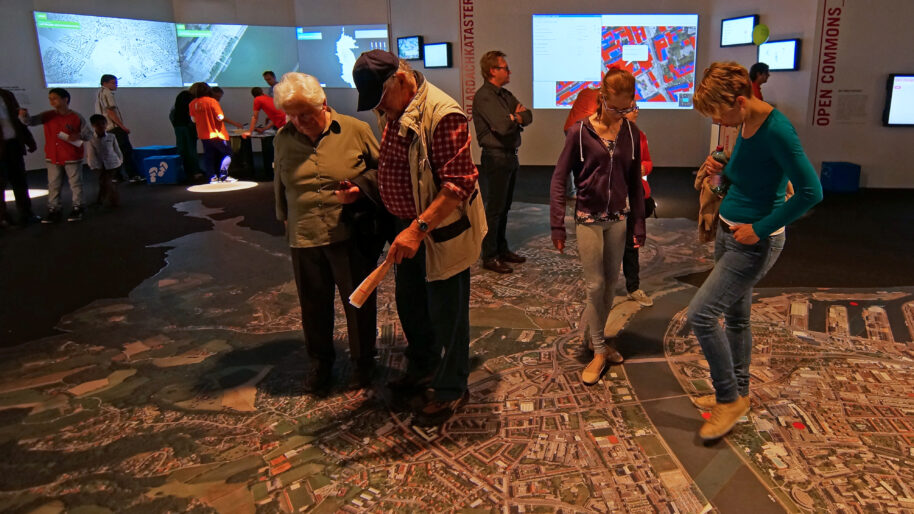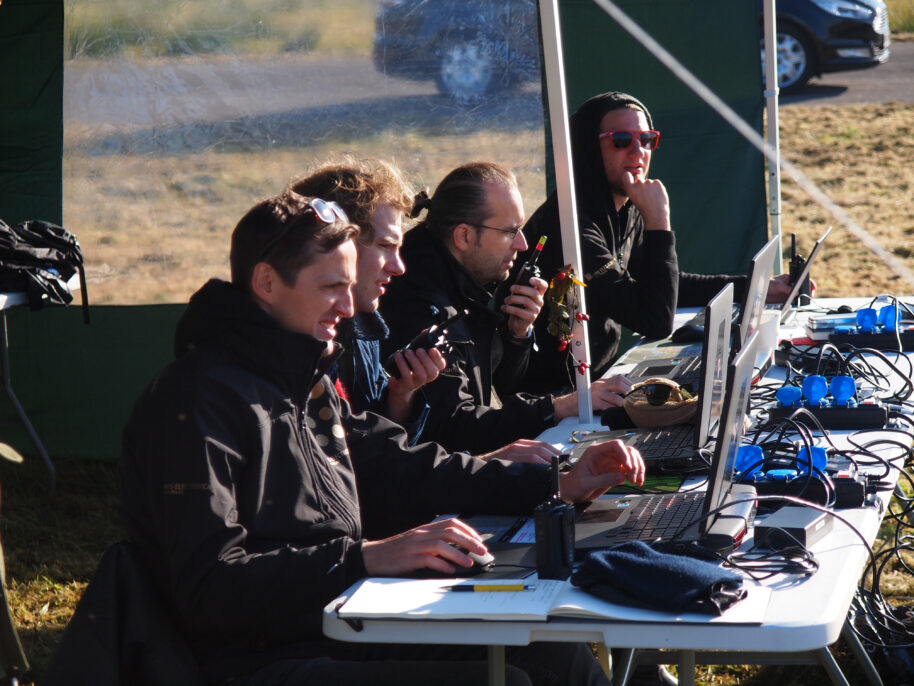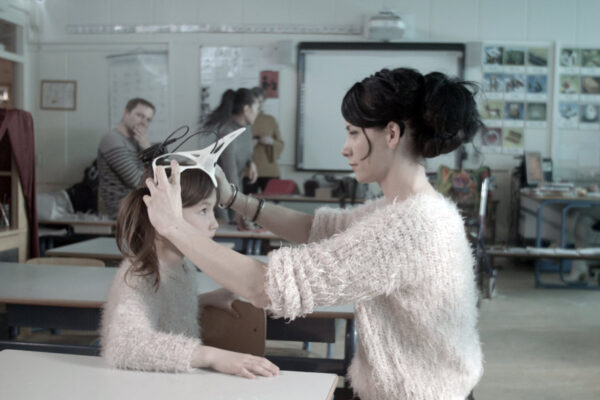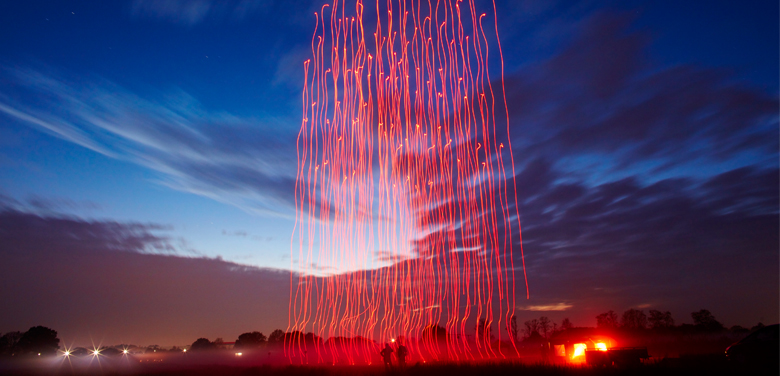Christopher Lindinger, co-director of Ars Electronica Futurelab, talks about the creative lab culture that forms his working environment, shares his thoughts on group dynamics and organizational structures, and reflects on the potential and challenges of technological development for the future of cities and their inhabitants.
CA: What is the Ars Electronica Futurelab, and what does working there look like?
CL: I think it is impossible to have a museum1 of the future without a research lab that allows translating potential future visions into technology or art. This has been our goal ever since I started working for the Ars Electronica Futurelab nineteen years ago. Because technology develops much faster than our ability to use it, our research focuses on the role it plays in changing society at large and on the role the arts play in communicating these changes. We are looking at this topic from the perspective of different domains and we use different formats to discuss the changes we observe, to popularize them and connect with a broad audience.
We also run a number of research programs in product development for the industry. There we examine the potential role certain products can play in the societal changes I mentioned before. Some of them are applied on the scale of the city. Since Ars Electronica is financed by the local government, we are indebted to the city in which we are based. We owe it our reflection about the impact which technology might have on it. These are, in a nutshell, some of the points that define our mission. The way we realize it, I would say, is experimental, artistic and scientific, and always oriented towards the applied fields. We call it applied creativity.
CA: Are there examples of projects that you consider representative of your work?
CL: That’s hard to say, because we produce about one hundred projects across a broad range of topics every year. They include projects for big industry, for example research on self-driving cars, and for companies that look at the cultural changes which come with this technology, such as the implications that self-driving cars would have on cities and the existing infrastructure inside and outside of them. We also work on similar questions in the rural context. Recently we developed a project for an area north of Linz where many small companies are located, where the lack of density makes work acquisition time consuming and inefficient. We focused on connecting them in a network, creating a gratification system and optimizing it. We used a social exchange system, which is very often forgotten, but the lack of which often creates strong barriers. We often look towards technological solutions to improve efficiency, but ultimately technology has a great capacity for creating social dynamics. Usually we experiment and search for potential applications for various technologies. We are currently developing new participatory tools for the city government in Linz. Every project has the potential to instigate change on an intellectual, emotional and cultural level. The Ars Electronica Center is mainly concerned with questions of creativity and what is necessary to make people think differently.

CA: At the website of the Futurelab the notion of shared creativity is mentioned quite prominently. You already mentioned applied creativity. Can you elaborate on your understanding of creativity?
CL: Creativity is often misunderstood. Frequently people associate creativity with a genius working in concentrated isolation, who all of a sudden comes up with ideas. This is not how creativity works. Creativity never appears when elements in a given system go in the same direction. It appears when different ways cross, when there are accidents and collisions. They are the sparks of creativity. So, the first thing is to provide an environment where creative impulses, which we call the seeds, can create such collisions. We generate this condition mainly by inviting people with different backgrounds to collaborate.
The next question is what do you make out of this shared creativity when it happens? What we do is to realize the ideas that appear for example by building prototypes and this is where applied creativity comes into play. The process of prototyping and presenting them to the public generates a certain pressure, but also answers questions that would never have been asked in theory. That’s why we don’t stay on the theoretical level. We think it’s very important to build the hardware, because of the creativity that happens during this process.

CA: So it’s about understanding when an accident isn’t negative and can be used in a good way.
CL: Yes, and that’s a cultural aspect. When those accidents happen day after day, in a group of people who don’t know each other, it can be irritating. But if there is a way to discuss what happens and if there is mutual respect, something can come out of it. This kind of culture is really necessary in the lab.
CA: Is this something that you knew from the beginning or did you have to work it out over time? Is there something you wish you had known at the start of your career?
CL: Since the very beginning, the values of the lab have been very important to us. We never intended to get rich. We wanted to build a great environment in which to live and work. That’s still valid and we keep on reflecting on it. I think that keeping a sensitive mind helps us to create good dynamics that allow us to feel what works and what doesn’t. When you regularly reflect on something, it’s much easier to adjust what is wrong.
What took me longer to understand was the outside world and the hierarchies that exist there. One of the first things I learnt is summarized well in the famous words of Grace Hopper: ‘It’s easier to ask for forgiveness than it is to get permission’.
Hierarchical structures, lack of funds, requirements to deliver quantifiable output and similar obstacles generate constant fear over whether something will work or not. Fear is in fact the biggest killer of great ideas and before you introduce an idea to a structured organization you need to understand it first. This is particularly evident in big companies. If you would imagine this idea as a little pink balloon, to go through one of these big companies, your balloon has to climb through a very high chimney of internal hierarchies. Your goal is to bring it from the bottom to the top and to the outside world, but the chimney is full of rusty nails, called middle management, so there is always a danger that it will get destroyed by one of them. If you want to succeed, you have to think about the structure of these nails in advance and devise strategies to secure your balloon on its way to the outside world.
Speaking of management, another important lesson I learnt is that there is only a certain amount of people which can be managed while maintaining an active creativity culture. I would say it’s a maximum of forty people. Above that amount, structures need to be created and structures in general are killers of innovation culture. Additionally, teams need people who are the carriers of innovation. In every group, also in ours, there is a specific dynamic that occasionally becomes negative. When something doesn’t work, even a stupid thing, if one person starts to complain, there is a chance that suddenly everybody else starts to complain as well. In that moment of negative energy, there must be a person that can bring the group back on track. Only in that way can a structure grow in a healthy way.
CA: Management is a complicated sea to navigate through…
CL: Actually, management – in a classical sense – is one of the most boring tasks, so it is important to create structures that work without strict supervision. We work a lot towards this goal, for example by paying attention to the way we communicate.
Many different professionals, including scientists, engineers, artists and designers, work together in the lab. Engineers for example tend to use complicated jargon. People just don’t understand what they mean. Years ago I came across a quote:
‘there isn’t a complex technical system, only a complex technical description’
Inspired by this, I often ask people to repeat their description over and over again until they choose a language which even my grandma would understand. At first it’s hard and some hate me for insisting on the simplicity of language, but I find it very important, because when people are careful about the language they use, the moderation between groups becomes redundant and people can work more independently.
Another important lesson concerning group involvement relates to the fact that every idea needs a team to realize it. Artists often observe that in science there is a main scientist writing a paper while the other project contributors are merely acknowledged. As a manager you don’t want your team to work like that. If on a shared creativity basis people get involved in the ideation process – the stage when the idea is generated – they identify with the project and work together. A good manager should thus involve everyone who is needed throughout the project from its very beginning.

CA: Do you have complaints or things that you would like to improve?
CL: Yes, most of them have to do with structures, not in our environment, mostly related to the clients we work with. I often complain when people are not interested in the project they work on; they don’t care about any of the benefits that the project may bring, whether to the company, to society or to anyone else. They validate it based on their own career development, and that’s something I hate. This attitude is, however, a part of human nature and it is very hard to change, so I will keep complaining about this until the end of my life.
CA: Do you have a master? Somebody you have learnt a lot from?
CL: I have met a lot of people who influenced me greatly. They are not masters in a traditional sense of an old professor though. I appreciate them for their approach, for opening up new perspectives and for changing my own perspective.
CA: From your position, what do you see as the most urgent problem that cities are facing?
CL: I’m interested in the speed with which cities grow and I think that many other topics are linked to it – from waste management to energy and architecture. One of the main challenges will be to maintain social practice, which seems be difficult with architecture that proliferates cities with skyscrapers and mega structures, at the same time hindering social exchange by removing public space and human scale.
Another hot topic is the growth of the urban population, the creation of new urban societies, and the organization of political systems to accommodate the changes we are facing into a better system of governance. This also relates to increasing automation that will be made possible with technology and includes robots in healthcare, self-driving cars on the streets, and similar changes in many other services. It will have a profound impact on how we will think of cities in the future. A map of the old city center in Linz shows plenty of little streets going in weird ways, but as we know the introduction of cars made straight lines more important to urban growth as they accommodate speed better. The architecture of the city serves the needs of a certain time and changes accordingly.
In the same way that cars shaped the infrastructure of today, self-driving cars will shape it in the future. We have to consider what this change will mean for the future of cities and the space of the citizens.
CA: Do you think this is a chain reaction? Cities grow so fast that new technologies are created to accommodate that growth and solve the problems that come with it, but at the same time they attract more people, in turn pushing cities to grow even more.
CL: Technology shapes the way we think, live and work. To stay on the topic of the self-driving cars, there is an ongoing discussion about redefining the notion of traffic, and streets that currently have separate lanes for cars, bicycles and pedestrians. Using robotic devices such as self-driving cars and the like will allow us to think differently about urban planning.2 Self-driving cars, for instance, do not require space for inner city parking. They can drop their users off anywhere and autonomously search for a parking lot outside the city. The technology and the city change in an integrated way, but at the same time, as I mentioned before, technology develops faster than our ability to use it.
CA: The issue of infrastructure is crucial here. Once a highway is built, it’s not possible remove it anytime soon. We are bound by the materiality of our world. How can we think about physical infrastructure in ways that can accommodate many possible futures?
CL: This is true. I think the question is how to produce infrastructure that people take ownership of. When we designed the Ars Electronica building, we introduced a public staircase hoping that people would use it at night, turning the adjacent square into a stage. Luckily it worked. Just after the building was completed, summer started and the staircase was immediately full of people. They took the ownership of these stairs. I think it is very important to create places where people not only live, but out of which they also make something new.
CA: Can technology instigate this attitude?
CL: The only positive aspect of our society at the moment is the potential of our digital selves. Staging a flash mob here, participating there and having an argument online are points where people contribute to the society. This is changing our notion of the self and the public, and I consider it a positive development. Because of this socialization process people are more willing to take responsibility in the city and I find it truly promising.
- The Futurelab is a part of Ars Electronica electronic arts center in Linz, Austria. ↩
- In 2015 Amateur Cities published the work ‘Ethical Autonomous Vehicles‘ by Matthieu Cherubini which questions the ethical code of self-driving vehicles. ↩
